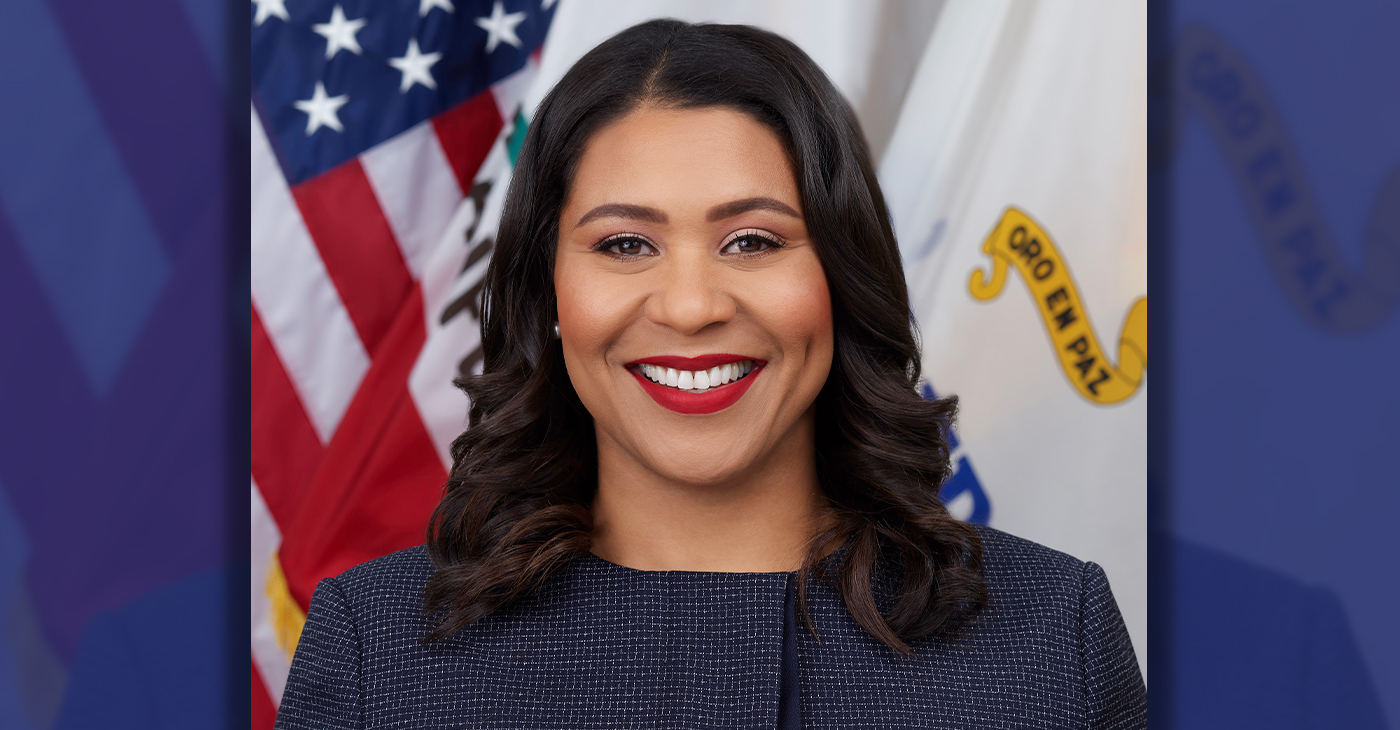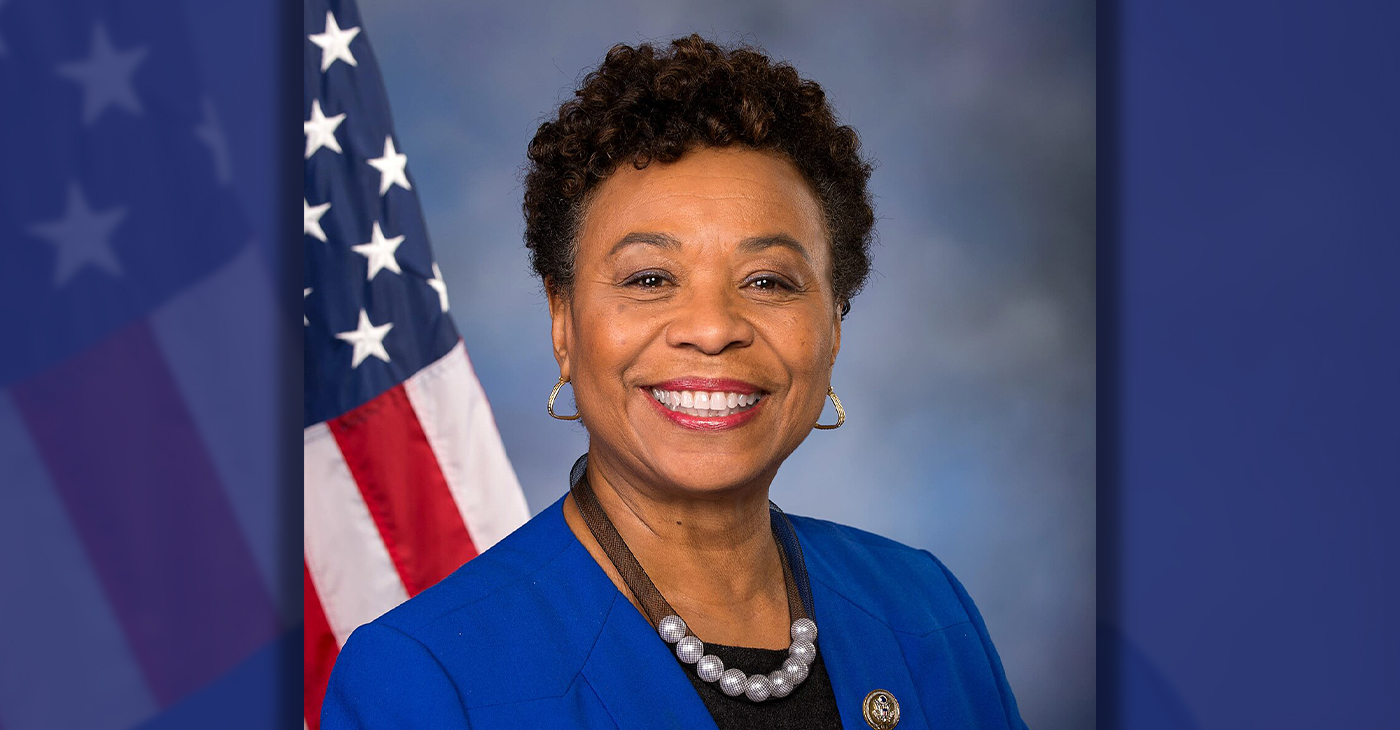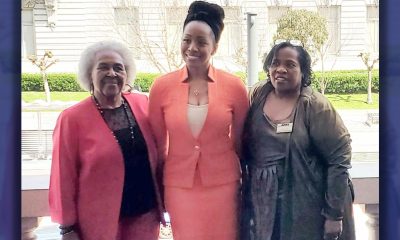Politics
Congress Struggles to Replace No Child Left Behind
By Jazelle Hunt
NNPA Washington Correspondent
WASHINGTON (NNPA) – As Congress works toward a comprehensive education policy that will replace the Bush Administration’s No Child Left Behind, two different bills from the House and Senate are up for consideration.
No Child Left Behind expired in 2007 – the law was the last time the original Elementary and Secondary Education Act of 1965 (ESEA) was renewed.
If either of the current proposals is signed into law in their current states, it could spell difficulties for Black and Brown children, according to Secretary of Education Arne Duncan.
“I always say that education is the civil rights issue of our time,” he said. “The next question we as a nation should be asking is whether Black children, Latino children…children around the nation – are they receiving the quality of education they need and deserve? And too often the honest answer is, not even close. There should be nothing political or ideological about this; this is about fighting for kids’ educational opportunity.”
Secretary Duncan believes that Congress’ resistance to federal oversight will weaken whatever law is passed. Neither the House’s Student Success Act (SSA) nor the Senate’s Every Child Achieves Act (ECAA) gives the Department of Education the authority to hold states accountable for educational outcomes, create national standards/mandates, or pass judgment on a state’s education system.
Also, neither bill closes the ESEA’s “comparability loophole” – a loophole that allows states to skimp on state and local funding for needy schools, forcing them to rely heavily on federal Title I money. As a result, high-poverty schools remain under-resourced and saddled with underpaid, inexperienced teachers, because the state won’t match the federal funds.
“Education will always be a primarily a local issue, but [there is] a clear federal role here on several levels. First of all, taxpayers…are putting billions of dollars out to states every year for poor children, for English language learners, for children with special needs,” Duncan said in an interview with the NNPA News Service. “And there’s no real accountability. Transparency by itself doesn’t change a kid’s opportunities.”
The similarities between the laws end there.
In general, the SSA seeks highly flexible public education by prohibiting almost all federal involvement, allowing states to create and rely on their own education plans instead. There are guidelines for what these plans must address, including a system to find and correct racial disparities, or deal with ineffective teachers. But the bill painstakingly avoids telling states how they should meet these guidelines.
A state can also create whatever curriculum it wants – as long as it includes at least math, literacy, and science, and state tests to go along with the curriculum. States would also be largely responsible for holding themselves accountable for their own strategies and all students’ academic success. The Department of Education would only be responsible for reviewing the states’ self-evaluations to make sure tax dollars aren’t misused. In that case, Secretary Duncan is only allowed to issue recommendations and public reports.
The SSA also includes a controversial “portability provision,” which would direct Title I funds wherever a low-income student is enrolled. Even a well-resourced public school or a private school could receive Title I funds if it has a single low-income student.
“House Republicans have chosen to take a bad bill and make it even worse,” Duncan said in a statement after the SSA was passed in the House. “This bill – which was passed in an entirely partisan fashion – represents a huge step backward for America’s students. They deserve better.”
The Senate’s ECAA attempts to provide state flexibility and more support than No Child Left Behind did, while still providing some federal guidelines. For example, while states would create their plans, the plans must be aligned with college entrance requirements or career/vocational education standards, and must include high standards for early childhood education programs, students with disabilities, and English language learners.
Under the bill, states are encouraged to use a variety of data in fostering and measuring student achievement, including projects, portfolios, and annual state exams. Both states and the Department of Education would share “best practices” from schools around the country.
The ECAA also sets aside funds solely for states to reward the best teachers and supports and interventions for less effective ones. Additionally, the state plans must distinguish between low-performing schools and those that need support for less-controllable factors, such as a high migrant student population.
Even the bill’s supporters have reservations, however. Last month, the Congressional Tri-Caucus, a coalition of the Black, Asian, and Latino Congressional caucuses, issued an open letter stating that while they appreciate the bill’s bipartisanship, it does not yet “do enough to protect the historically disadvantaged and vulnerable students the ESEA is intended to serve.”
A few amendments have been made since then, including guidelines for disabled students, increased access to STEM lessons and opportunities for “underrepresented” students, and better means of identifying and supporting homeless students.
Duncan hopes the final law will draw on best practices from school districts around the nation; cap the amount of time spent on standardized testing; close the comparability loophole; compel states to intervene and support the lowest-performing five percent of its schools; and grant the Department of Education Department the authority to implement and enforce these benchmarks.
The Senate will likely vote on a final version of the ECAA this week. When it does, key members of both chambers will have to find a way to combine their proposals and send one bill out for the President’s signature. If he rejects it, it’s back to the drawing board – or the ESEA just won’t be reauthorized anytime soon.
“Everyone has their opinions and debate is healthy and important. So I’ll just [reiterate], this is a civil rights law,” Duncan told the NNPA News Service. “This is fighting to increase equity and opportunity so that every child has chance at life. Educational opportunity has to be the equalizer in our nation, the one thing that will help equality the gap between the haves and have-nots.”
Bay Area
MAYOR BREED ANNOUNCES $53 MILLION FEDERAL GRANT FOR SAN FRANCISCO’S HOMELESS PROGRAMS
San Francisco, CA – Mayor London N. Breed today announced that the U.S. Department of Housing and Urban Development (HUD) has awarded the city a $53.7 million grant to support efforts to renew and expand critical services and housing for people experiencing homelessness in San Francisco.

FOR IMMEDIATE RELEASE:
Wednesday, January 31, 2024
Contact: Mayor’s Office of Communications, mayorspressoffice@sfgov.org
***PRESS RELEASE***
MAYOR BREED ANNOUNCES $53 MILLION FEDERAL GRANT FOR SAN FRANCISCO’S HOMELESS PROGRAMS
HUD’s Continuum of Care grant will support the City’s range of critical services and programs, including permanent supportive housing, rapid re-housing, and improved access to housing for survivors of domestic violence
San Francisco, CA – Mayor London N. Breed today announced that the U.S. Department of Housing and Urban Development (HUD) has awarded the city a $53.7 million grant to support efforts to renew and expand critical services and housing for people experiencing homelessness in San Francisco.
HUD’s Continuum of Care (CoC) program is designed to support local programs with the goal of ending homelessness for individuals, families, and Transitional Age Youth.
This funding supports the city’s ongoing efforts that have helped more than 15,000 people exit homelessness since 2018 through City programs including direct housing placements and relocation assistance. During that time San Francisco has also increased housing slots by 50%. San Francisco has the most permanent supportive housing of any county in the Bay Area, and the second most slots per capita than any city in the country.
“In San Francisco, we have worked aggressively to increase housing, shelter, and services for people experiencing homelessness, and we are building on these efforts every day,” said Mayor London Breed. “Every day our encampment outreach workers are going out to bring people indoors and our City workers are connecting people to housing and shelter. This support from the federal government is critical and will allow us to serve people in need and address encampments in our neighborhoods.”
The funding towards supporting the renewal projects in San Francisco include financial support for a mix of permanent supportive housing, rapid re-housing, and transitional housing projects. In addition, the CoC award will support Coordinated Entry projects to centralize the City’s various efforts to address homelessness. This includes $2.1 million in funding for the Coordinated Entry system to improve access to housing for youth and survivors of domestic violence.
“This is a good day for San Francisco,” said Shireen McSpadden, executive director of the Department of Homelessness and Supportive Housing. “HUD’s Continuum of Care funding provides vital resources to a diversity of programs and projects that have helped people to stabilize in our community. This funding is a testament to our work and the work of our nonprofit partners.”
The 2024 Continuum of Care Renewal Awards Include:
- $42.2 million for 29 renewal PSH projects that serve chronically homeless, veterans, and youth
- $318,000 for one new PSH project, which will provide 98 affordable homes for low-income seniors in the Richmond District
- $445,00 for one Transitional Housing (TH) project serving youth
- $6.4 million dedicated to four Rapid Rehousing (RRH) projects that serve families, youth, and survivors of domestic violence
- $750,00 for two Homeless Management Information System (HMIS) projects
- $2.1 million for three Coordinated Entry projects that serve families, youth, chronically homeless, and survivors of domestic violence
In addition, the 2023 CoC Planning Grant, now increased to $1,500,000 from $1,250,000, was also approved. Planning grants are submitted non-competitively and may be used to carry out the duties of operating a CoC, such as system evaluation and planning, monitoring, project and system performance improvement, providing trainings, partner collaborations, and conducting the PIT Count.
“We are very appreciative of HUD’s support in fulfilling our funding request for these critically important projects for San Francisco that help so many people trying to exit homelessness,” said Del Seymour, co-chair of the Local Homeless Coordinating Board. “This funding will make a real difference to people seeking services and support in their journey out of homelessness.”
In comparison to last year’s competition, this represents a $770,000 increase in funding, due to a new PSH project that was funded, an increase in some unit type Fair Market Rents (FMRs) and the larger CoC Planning Grant. In a year where more projects had to compete nationally against other communities, this represents a significant increase.
Nationally, HUD awarded nearly $3.16 billion for over 7,000 local homeless housing and service programs including new projects and renewals across the United States.
Activism
Oakland Post: Week of April 17 – 23, 2024
The printed Weekly Edition of the Oakland Post: Week of April 17 – 23, 2024

To enlarge your view of this issue, use the slider, magnifying glass icon or full page icon in the lower right corner of the browser window. ![]()
Barbara Lee
Congresswoman Barbara Lee Issues Statement on Deaths of Humanitarian Aid Volunteers in Gaza
On April 2, a day after an Israeli airstrike erroneously killed seven employees of World Central Kitchen (WCK), a humanitarian organization delivering aid in the Gaza Strip, a statement was release by Rep. Barbara Lee (D-CA-12). “This is a devastating and avoidable tragedy. My prayers go to the families and loved ones of the selfless members of the World Central Kitchen team whose lives were lost,” said Lee.

By California Black Media
On April 2, a day after an Israeli airstrike erroneously killed seven employees of World Central Kitchen (WCK), a humanitarian organization delivering aid in the Gaza Strip, a statement was release by Rep. Barbara Lee (D-CA-12).
“This is a devastating and avoidable tragedy. My prayers go to the families and loved ones of the selfless members of the World Central Kitchen team whose lives were lost,” said Lee.
The same day, it was confirmed by the organization that the humanitarian aid volunteers were killed in a strike carried out by Israel Defense Forces (IDF). Prior to the incident, members of the team had been travelling in two armored vehicles marked with the WCF logo and they had been coordinating their movements with the IDF. The group had successfully delivered 10 tons of humanitarian food in a deconflicted zone when its convoy was struck.
“This is not only an attack against WCK. This is an attack on humanitarian organizations showing up in the direst situations where food is being used as a weapon of war. This is unforgivable,” said Erin Gore, chief executive officer of World Central Kitchen.
The seven victims included a U.S. citizen as well as others from Australia, Poland, the United Kingdom, Canada, and Palestine.
Lee has been a vocal advocate for a ceasefire in Gaza and has supported actions by President Joe Biden to airdrop humanitarian aid in the area.
“Far too many civilians have lost their lives as a result of Benjamin Netanyahu’s reprehensible military offensive. The U.S. must join with our allies and demand an immediate, permanent ceasefire – it’s long overdue,” Lee said.
-

 Activism4 weeks ago
Activism4 weeks agoOakland Post: Week of March 27 – April 2, 2024
-

 #NNPA BlackPress4 weeks ago
#NNPA BlackPress4 weeks agoCOMMENTARY: D.C. Crime Bill Fails to Address Root Causes of Violence and Incarceration
-

 #NNPA BlackPress4 weeks ago
#NNPA BlackPress4 weeks agoFrom Raids to Revelations: The Dark Turn in Sean ‘Diddy’ Combs’ Saga
-

 #NNPA BlackPress4 weeks ago
#NNPA BlackPress4 weeks agoCOMMENTARY: Lady Day and The Lights!
-

 #NNPA BlackPress4 weeks ago
#NNPA BlackPress4 weeks agoMayor, City Council President React to May 31 Closing of Birmingham-Southern College
-

 #NNPA BlackPress4 weeks ago
#NNPA BlackPress4 weeks agoBaltimore Key Bridge Catastrophe: A City’s Heartbreak and a Nation’s Alarm
-

 #NNPA BlackPress4 weeks ago
#NNPA BlackPress4 weeks agoBaltimore’s Key Bridge Struck by Ship, Collapses into Water
-

 #NNPA BlackPress4 weeks ago
#NNPA BlackPress4 weeks agoBeloved Actor and Activist Louis Cameron Gossett Jr. Dies at 87




















































